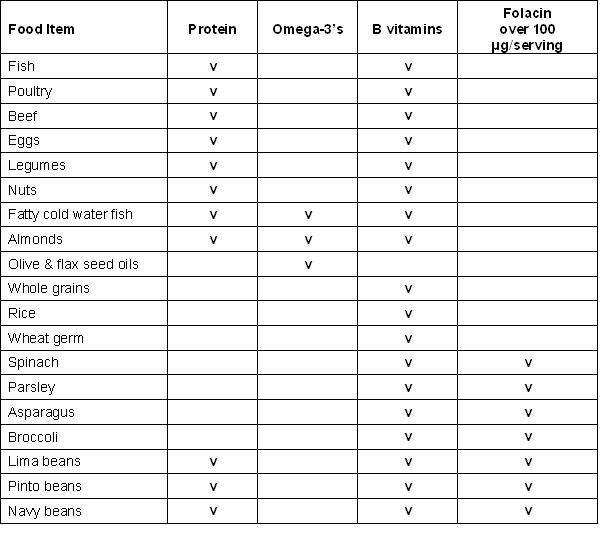|
Healthy Lunches Made SimplePacking healthy lunches will set you up for a successful day, whether you’re heading off to work or you’re preparing your children for a day at school. A healthy lunch will provide much needed nutrients part way through the day. The nutrients in your food, or lack thereof, will determine your performance for the second half of the day – so choose wisely. Nutrients that help your brain function well are proteins, omega-3 fatty acids, B vitamins and folic acid. Proteins break down to amino acids when digested and the essential amino acids tyrosine and tryptophan act as precursors to neurotransmitters. Research studies have shown that tyrosine improves cognition and performance in individuals when operating under stress and tryptophan, via the production of serotonin, has positive effects on food intake, sleep, and mood regulation. With tryptophan, the amount entering the brain is limited by the amount of other large neural amino acids competing for the same transporter pump. If you eat a meal high in protein, the amount of tryptophan entering the brain will be significantly less than the amount entering after eating a meal rich in carbohydrate and low in protein. This is due to the increased number of amino acids competing for the same transporter pumps therefore less tryptophan gets to where it’s needed. Hmmm…sheds some light on those grumpy, aggressive weight lifters hanging out at the local gym. I think they would be much happier people if they moved to a well balanced eating plan as opposed to their usual high protein intake. Let’s move on to the Omega-3 fatty acids. They are required for the development of brain cell structure. The Omega-3, DHA, is the primary structural fatty acid in the brain and affects synaptic function associated with learning and memory. In other words, Omega-3s provide you with added “brain power”. Since your body cannot efficiently synthesize DHA, you are required to ingest it through daily diet. Having an abundance of fatty acids in the cell structures of the brain makes these cells more susceptible to oxidation by free radicals. This is where the B vitamins come in. B vitamins help insulate nerve cells to protect the tissue from oxidation and enhance memory. Folic acid is also important as it plays a role in the synthesis of catecholamines which help regulate mood. So don’t forget to get your B’s.
Recap:
How do you bring these nutrients together in a healthy lunch? It’s simple. Start with multi-grain bread, add tuna (mixed with mustard is healthier than mixing with mayo), spinach leaves and tomato slices. Your sandwich contains B vitamins (multi-grain bread), omega-3’s and protein (tuna), folic acid (spinach), and lycopene (tomatoes). You can pair the sandwich with cucumber, carrot and red pepper slices and a large glass of water and you’re set. The many components of whole food act together within your body to produce a beneficial effect. Your body recognizes these components as they are in whole form and your body works with them like a well orchestrated symphony. You cannot replicate this with processed foods or supplements as you do not receive all of the same components at once. That would be like performing a symphony without the strings and only a partial horn section. Do yourself and your brain a favour and eat whole foods instead of processed or partial foods. Below is a list of foods that contain the nutrients discussed in this article. 
Use the list above as a check list to ensure you're getting the nutrients you need and fire up your own combinations for a healthy lunch. Return from Healthy Lunches to My Health Site Home Page |

